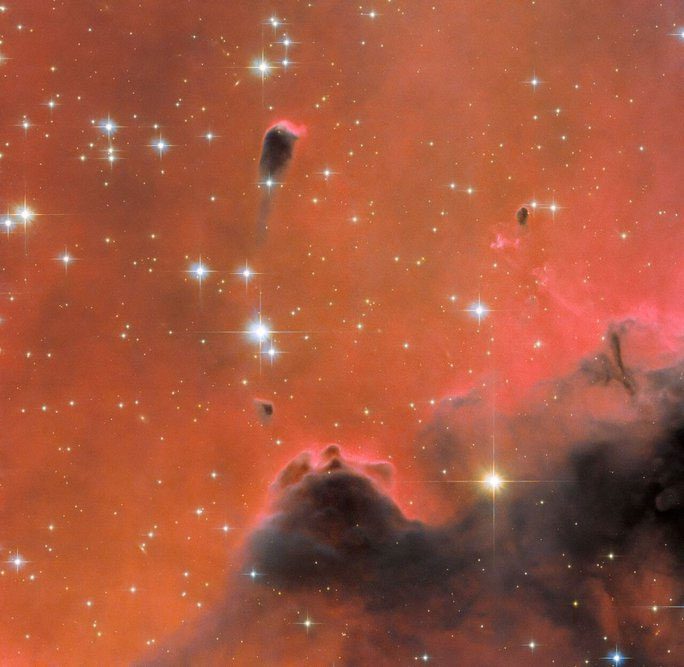The Hubble Space Telescope has captured a stunning image of the Soul Nebula, a vibrant red region within a colossal object located 7,000 light-years away from us.
The mesmerizing red light from a small area within the object known as Westerhout 5, also referred to as “the Soul Nebula”, holds significant value for astronomical research.

Stunning image of the Soul Nebula recently released by the Hubble operations team – (Photo: NASA/ESA)
According to Space, quoting an explanation from the Hubble operations team at NASA/ESA (the U.S. and European space agencies), the red color is due to H-alpha emission, which occurs when high-energy electrons in hydrogen atoms lose energy and release this ethereal light.
This red light also reveals a range of fascinating features such as the so-called “freely floating evaporating gas globule” (frEGG), appearing as a dark tadpole-like region on the left side of the image.
This frEGG and its “relatives” belong to a special type within a larger group known as EGG (evaporating gas globule).
frEGGs appear in nebulae when energy radiation from young, hot stars ionizes the surrounding gas by stripping away electrons. This causes the gas to disperse away from those bright stars in a process called photodissociation, which can help prevent star formation within the nebula.
Normal EGGs have a slower photodissociation process, thus limiting the formation of protostars to a lesser extent.
These peculiar structures are closely related to the star formation process in the universe’s “star nurseries,” making them of great interest to astronomers.


















































